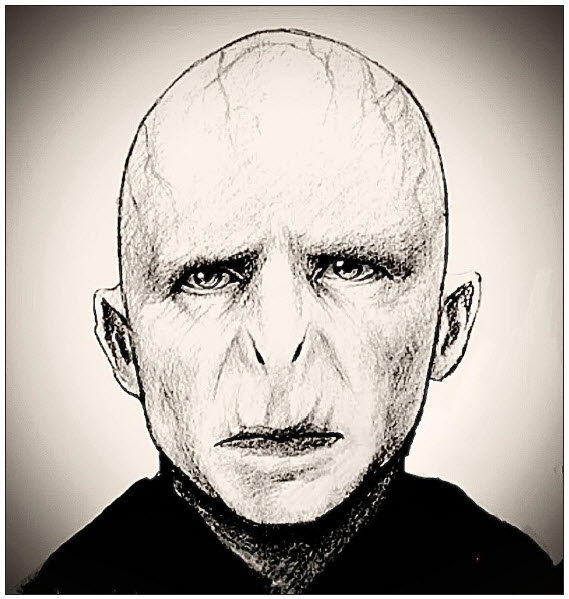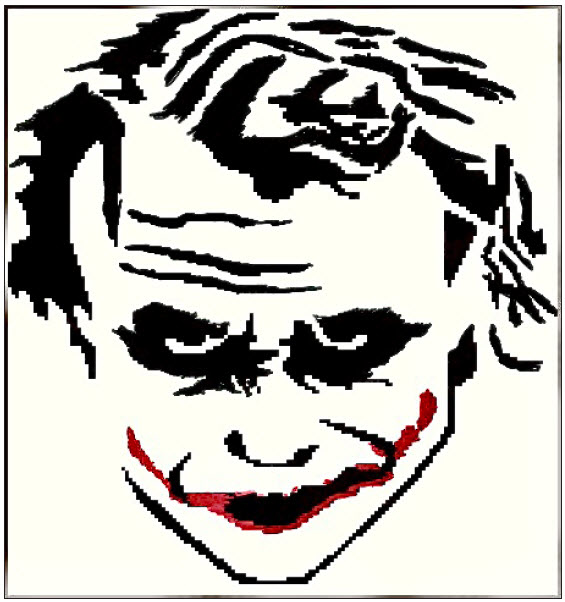Translate this page into:
Dermatology and the media – Embracing the scars
Corresponding author: Dr. Rochelle C. Monteiro, Department of Dermatology, Father Muller Medical College, Kankanandy, Mangaluru, India. rochelle.cheryl@gmail.com
-
Received: ,
Accepted: ,
How to cite this article: Monteiro RC, Fernandes M. Dermatology and the media – Embracing the scars. Indian J Dermatol Venereol Leprol. 2024;90:696-7. doi: 10.25259/IJDVL_416_2024
‘If you kill a cockroach, you are a hero, if you kill a butterfly, you are evil. Morals have aesthetic criteria.’ ― Friedrich Nietzsche
Cinema wields a significant influence on public perception, especially concerning the physical appearances of actors. Traditionally, skin conditions in films have reinforced stereotypes of good versus evil, associating attractiveness with morality and disfigurement with villainy. Popular villains often exhibit dermatological flaws like scars, alopecia, or dark circles.1 Such physical attributes were employed to convey disdain in the era of silent movies. Despite the advent of the talkies, these traits continued to be deployed in modern cinema and unfortunately, most have dermatological connotations.
A study published in JAMA Dermatology found that a century of filmmaking associating skin diseases with villains has perpetuated negative stereotypes and can be harmful to individuals who suffer from these ailments.2 Physical features such as baldness, alopecia, albinism, pallor, dark circles, facial nevi, poliosis, dark complexion, and scars often suggest the individual is ‘damaged or immoral’. Living with any skin disease is an emotional journey and negative movie portrayals only amplify this burden.
Throughout history, we come across some iconic villains, who are unforgettable due to their distinctive physical or facial features. Among the acclaimed villains in Hollywood is Hannibal Lecter (Silence of the Lambs), portrayed with alopecia. Darth Vader, another quintessential villain, although most often hidden behind a mask, had deep scars, wrinkles, facial pallor, and dark circles. The evil queen in Snow White exhibited a large nose (rhinophyma) and wrinkles. Among the dermatological traits, facial scarring is a commonly used visual shorthand to indicate a malicious character. Scar, in The Lion King (named after his facial scar), Voldemort (alopecia and nasal deformity) [Figure 1], and the unforgettable Joker in The Dark Knight with his severely disfigured scarred face and deep rhytides are characters that continue to live in our psyche due to their impact on the audiences3 [Figure 2].

- Lord Voldemort (From the Harry Potter movies) with alopecia and nasal deformity

- The Joker (From the movie Batman) with extensive facial scarring and periorbital melanosis
Indian cinema fares no better in the portrayal of dermatological disorders. The unforgettable Lajja Shankar Pandey (Sangharsh), depicted with a facial scar and alopecia; the iconic Kancha Cheena (Agneepath); Shakaal (Shaan); and Shiv Prasad Yadav (Mardaani 2) were portrayed with alopecia. Many villains in Indian cinema bear dark-coloured skin, as opposed to the light-skinned main protagonist. In a country already obsessed with light skin, the portrayal of immorality with dark skin will only further this prejudice.
Does this imply all main characters have flawless skin? There are very few exceptions to this rule. Maharawal Ratan Singh (Shahid Kapoor in Padmaavat) bore a mild facial scar; however, in an interesting but not unexpected twist, the villain Allaudin Khilji (Ranveer Singh) displayed a more malevolent facial gash. The Joker (Batman) flaunted disfigured perioral scars versus the endearing forehead cut displayed by Harry Potter. Are we subconsciously trying to drive home the message that beauty and morality go hand in hand? ‘the deeper the scars, the lesser the morals?’.
In a society fixated on flawless skin, depicting facial imperfections in a negative light only reinforces harmful prejudices. As dermatologists, we are aware that acne scars, dark circles, and alopecia are difficult-to-manage conditions requiring a multimodal and prolonged therapeutic approach. Patients can be perverse, despite our suggestions to lower their expectations, in their pursuit of flawlessness.3 A patient with alopecia already suffers due to the deep physical, emotional, and psychological burden of his appearance, and difficulty in the management of his disease. How the public and his peers view him has a significant bearing on his overall well-being. A patient with atopy or periorbital melanosis would not want the world to view it as a sign of unattractiveness or malice. Another tragic example would be someone involved in a road traffic accident or acid attack, already bearing deep physical and emotional scars, being judged, and having to face disdain from the onlooker. For people suffering from common skin conditions such as vitiligo, warts, acne, and hair loss, this kind of stereotyping can be psychologically devastating.
In a commitment to fight the social stigma associated with disfigurement, the British Film Institute announced that it would no longer fund films that feature villains with facial scars.4 This may be a positive step towards eliminating discrimination based on appearances; however, a more inclusive approach would be to portray all characters bearing scars without any underlying moral connotations. An alternative approach to eliminating the scarred antagonists would be to create inspirational heroes with disfigurements.5 A recent example is the portrayal of an acid attack survivor by Deepika Padukone in the movie “Chhapaak”. Another very progressive step in this regard was seen in the movie “Deadpool”, where the hero, although terribly mutilated, is most endearing.2 The success of this movie implies that a strong character is just as, if not more, appealing than conventional heroes based solely on facial features. Hence, it would be best if future movie writers would concentrate more on developing strong characters and entirely abandon such stereotyping of dermatological conditions. Let the onus be on the actor’s character, to portray villainy or heroism, rather than base it on their external appearance. Every scar tells a story, which represents valour, determination, and the triumph of the human spirit against adversity. Scars can be beautiful. May we learn to accept them without prejudice.
Declaration of patient consent
Patient’s consent not required as there are no patients in this study.
Financial support and sponsorship
Nil.
Conflicts of interest
There are no conflicts of interest.
Use of artificial intelligence (AI)-assisted technology for manuscript preparation:
The authors confirm that there was no use of artificial intelligence (AI)-assisted technology for assisting in the writing or editing of the manuscript and no images were manipulated using AI.
References
- The Asian Age. Movie villains and their scars may haunt those with skin conditions; 2017 Apr 7. Available from: https://www.asianage.com/life/health/070417/movie-villains-and-their-scars-may-haunt-those-with-skin-conditions.html. [accessed 2024 Mar 26]
- Dermatologic features of classic movie villains: The face of evil. JAMA Dermatol. 2017;153:559-64.
- [CrossRef] [PubMed] [Google Scholar]
- https://theconversation.com. Despite appearances , not all people with scarred faces are movie villains.; 2017 Oct 19. Available from: https://theconversation.com/despite-appearances-not-all-people-with-scarred-faces-are-movie-villains-84732. [accessed 2024 Mar 26]
- Smithsonian magazine. Why do so many hollywood villains have skin conditions?; 2017 Apr 6. Available from: https://www.smithsonianmag.com/smart-news/screen-villains-have- bad-skin-which-promotes-stereotypes-180962811/. [accessed 2024 Mar 26]
- Forbes. Should Villains With Facial Scars Disappear From The Screen?; 2018 Nov 30. Available from: https://www.forbes.com/sites/danidiplacido/2018/11/30/should-villains-with-facial-scars-disappear-from-the-screen/?sh=638198157122. [accessed 2024 Mar 26]






